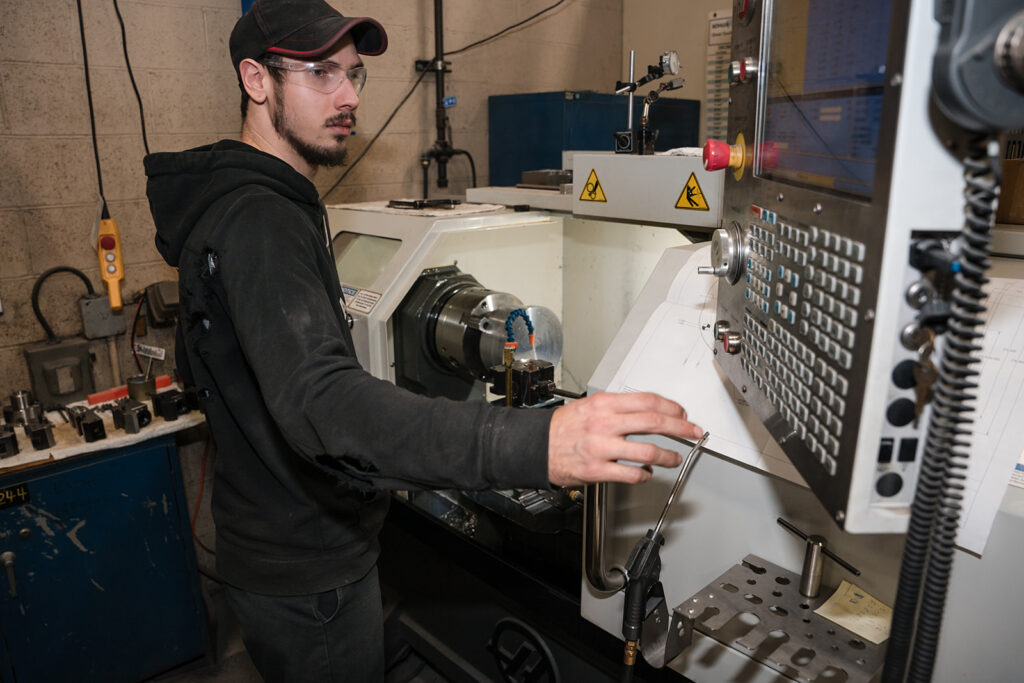CNC Machining vs. Traditional Machining: Understanding the Differences
In the realm of manufacturing, precision and efficiency dictate success. Two prevalent methods, CNC (Computer Numerical Control) Machining and traditional machining, have stood the test of time but serve different purposes and cater to varied needs. At Adept Corporation, we specialize in CNC machining while appreciating the art and science behind traditional methods. This article aims to demystify the differences, advantages, and applications of CNC and traditional machining, guiding you in choosing the right approach for your manufacturing needs.
Understanding Traditional Machining
Traditional machining, often referred to as manual machining, involves manually controlled tools such as lathes, milling machines, and drills. An operator controls the movement and the material removal process, relying on their skill and experience. This method has been the backbone of manufacturing for decades, prized for its simplicity and direct control.
Understanding CNC Machining
CNC machining, on the other hand, employs computerized controls to operate and manipulate machine tools. From milling and turning to drilling and grinding, CNC machining automates the manufacturing process, relying on pre-programmed software and digital instructions to create precise and complex parts.
Differences Between CNC and Traditional Machining
- Precision and Consistency: CNC machining offers unparalleled precision and consistency, producing parts with tight tolerances repeatedly. Traditional machining depends heavily on the operator’s skill, which, while precise, may vary from piece to piece.
- Complexity and Versatility: CNC machines can produce complex shapes and designs that are often impossible to achieve with manual controls. Traditional machines are limited by the operator’s capability and the machine’s constraints.
- Speed and Efficiency: CNC machining significantly reduces production time by automating the manufacturing process. Traditional machining is slower due to manual operations and adjustments.
- Labor and Skill Level: CNC machining requires operators with programming knowledge but less manual intervention. Traditional machining demands highly skilled operators who can work with hand tools and measurements.
- Cost and Investment: Initially, CNC machinery represents a higher investment than traditional machines. However, the long-term benefits of reduced labor costs and increased productivity often offset the initial expenses. Traditional machining, while cheaper to start, may incur higher costs over time due to slower production rates and labor expenses.
- Flexibility and Adaptation: CNC machines can quickly switch between different operations and products, making them ideal for custom and variable production runs. Traditional machines are better suited for single-type, long-run projects.
Advantages of CNC Machining
- High Precision and Repeatability: CNC machines produce parts with exceptional accuracy, meeting stringent industry standards.
- Reduced Human Error: Minimizing manual intervention reduces the risk of errors and inconsistencies.
- 24/7 Operation: CNC machines can run continuously, increasing production capacity.
- Complex Part Production: CNC technology enables the production of complex and intricate parts without sacrificing quality or precision.
Advantages of Traditional Machining
- Lower Initial Costs: Traditional machines are less expensive, making them accessible for small-scale operations or hobbyists.
- Immediate Control and Adjustments: Operators can make real-time adjustments, offering a level of immediacy that CNC machines lack.
- Artistry and Craftsmanship: Traditional machining allows for a level of artistry, particularly in custom, one-off projects or when restoring parts.
Applications of CNC and Traditional Machining
CNC machining serves industries requiring high precision and production volume, such as aerospace, automotive, medical, and technology. Traditional machining is often utilized in bespoke projects, repair work, or when manual finesse is required, such as in artistic endeavors or restoration projects.
Choosing Between CNC and Traditional Machining
The choice between CNC and traditional machining depends on several factors, including:
- Production Volume: High-volume projects favor CNC machining, while low-volume or one-off projects may benefit from traditional methods.
- Complexity of Parts: Complex designs require the capabilities of CNC machining.
- Budget Constraints: Evaluate short-term costs against long-term gains when deciding between the higher initial investment of CNC machines and the lower startup costs of traditional methods.
- Timeline Requirements: CNC machining typically offers faster turnaround times.
Adept Corporation’s Approach to Machining
At Adept Corporation, we primarily focus on CNC machining due to its precision, efficiency, and versatility. However, we respect the art of traditional machining and understand its place in the manufacturing world. Our approach is to assess each project individually, considering the client’s needs, project specifications, and ultimate goals to recommend the most suitable machining method.
Conclusion: The Path Forward in Machining
The debate between CNC and traditional machining is not about which method is superior but about which is best suited to a particular application. CNC machining offers modern solutions to today’s manufacturing challenges, providing precision, efficiency, and scalability. Traditional machining remains relevant, celebrated for its artistry, tactility, and accessibility.
In the evolving landscape of manufacturing, Adept Corporation remains committed to delivering quality, precision, and innovation. Whether through the advanced capabilities of CNC machining or the skilled hands of traditional methods, we are dedicated to turning your concepts into reality, ensuring the right fit for every project.
By understanding the strengths and applications of both CNC and traditional machining, manufacturers can make informed decisions that best meet their production needs and business goals, maintaining quality, efficiency, and innovation in their operations.





